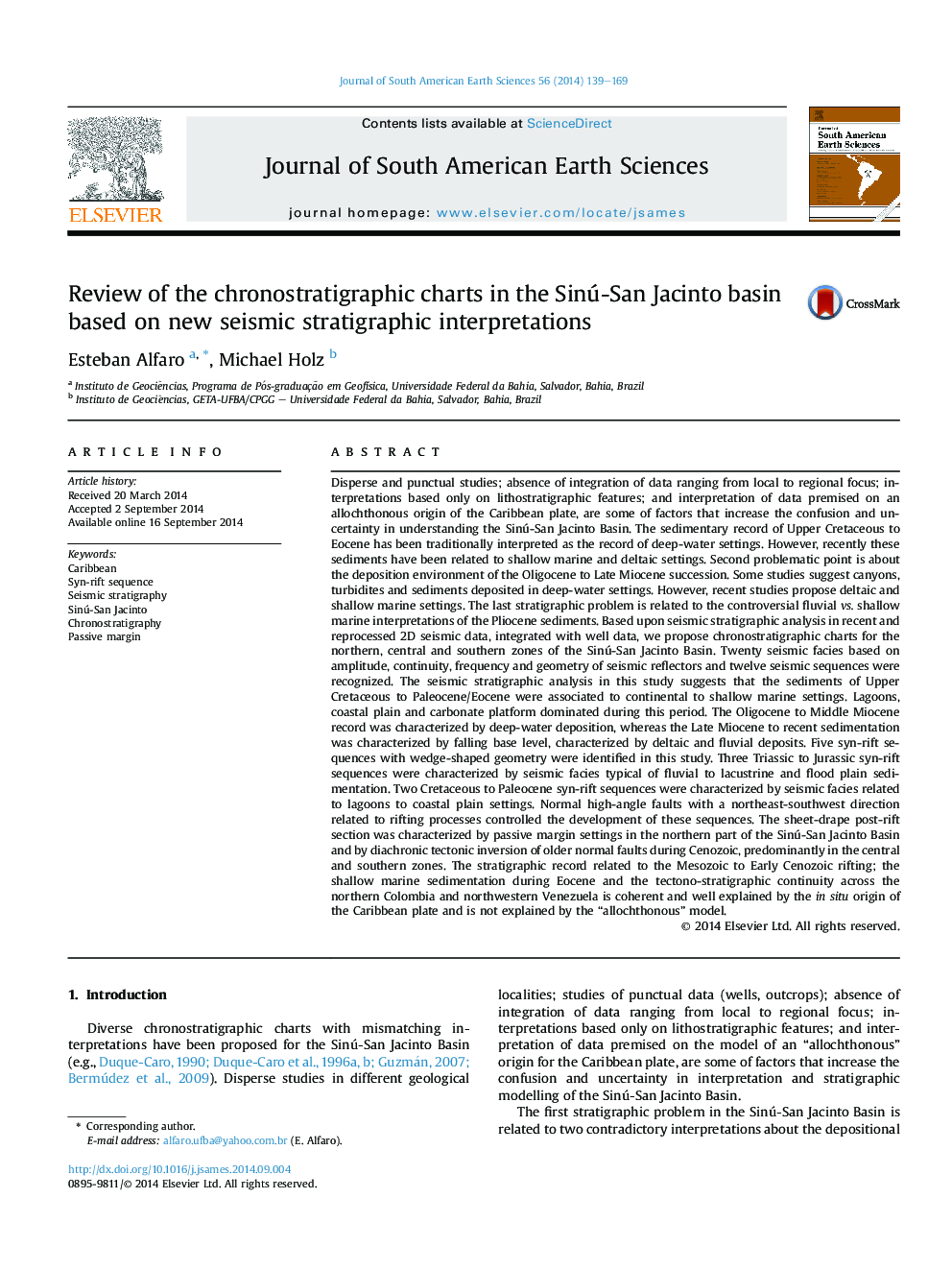| کد مقاله | کد نشریه | سال انتشار | مقاله انگلیسی | نسخه تمام متن |
|---|---|---|---|---|
| 6431368 | 1635153 | 2014 | 31 صفحه PDF | دانلود رایگان |

- We propose Mesozoic/Early Cenozoic syn-rift sequences in the Sinú-San Jacinto Basin.
- Seismic facies suggest continental/shallow marine settings during Upper Cretaceous.
- We propose a tectono-stratigraphic continuity with northern Colombia and Venezuela.
- We propose three chronostratigraphic charts for the Triassic to recent strata.
- Sequences are well explained by the in situ origin of the Caribbean plate.
Disperse and punctual studies; absence of integration of data ranging from local to regional focus; interpretations based only on lithostratigraphic features; and interpretation of data premised on an allochthonous origin of the Caribbean plate, are some of factors that increase the confusion and uncertainty in understanding the Sinú-San Jacinto Basin. The sedimentary record of Upper Cretaceous to Eocene has been traditionally interpreted as the record of deep-water settings. However, recently these sediments have been related to shallow marine and deltaic settings. Second problematic point is about the deposition environment of the Oligocene to Late Miocene succession. Some studies suggest canyons, turbidites and sediments deposited in deep-water settings. However, recent studies propose deltaic and shallow marine settings. The last stratigraphic problem is related to the controversial fluvial vs. shallow marine interpretations of the Pliocene sediments. Based upon seismic stratigraphic analysis in recent and reprocessed 2D seismic data, integrated with well data, we propose chronostratigraphic charts for the northern, central and southern zones of the Sinú-San Jacinto Basin. Twenty seismic facies based on amplitude, continuity, frequency and geometry of seismic reflectors and twelve seismic sequences were recognized. The seismic stratigraphic analysis in this study suggests that the sediments of Upper Cretaceous to Paleocene/Eocene were associated to continental to shallow marine settings. Lagoons, coastal plain and carbonate platform dominated during this period. The Oligocene to Middle Miocene record was characterized by deep-water deposition, whereas the Late Miocene to recent sedimentation was characterized by falling base level, characterized by deltaic and fluvial deposits. Five syn-rift sequences with wedge-shaped geometry were identified in this study. Three Triassic to Jurassic syn-rift sequences were characterized by seismic facies typical of fluvial to lacustrine and flood plain sedimentation. Two Cretaceous to Paleocene syn-rift sequences were characterized by seismic facies related to lagoons to coastal plain settings. Normal high-angle faults with a northeast-southwest direction related to rifting processes controlled the development of these sequences. The sheet-drape post-rift section was characterized by passive margin settings in the northern part of the Sinú-San Jacinto Basin and by diachronic tectonic inversion of older normal faults during Cenozoic, predominantly in the central and southern zones. The stratigraphic record related to the Mesozoic to Early Cenozoic rifting; the shallow marine sedimentation during Eocene and the tectono-stratigraphic continuity across the northern Colombia and northwestern Venezuela is coherent and well explained by the in situ origin of the Caribbean plate and is not explained by the “allochthonous” model.
Journal: Journal of South American Earth Sciences - Volume 56, December 2014, Pages 139-169